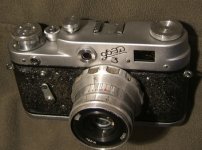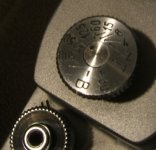mnmleung
Established
I absent-mindedly changed shutter speed before winding the film on my FED-2c. I notice the middle but of the shutter speed was turning and I thought that didn't look too good. And then I realised I forgot to wind on.
Does it mean I have stuffed the shutter already? What are the symptoms? What are the remedies? After two days of antenatal classes, I think I suffered a bit from overload ...
Hopefully yours, Ming
Does it mean I have stuffed the shutter already? What are the symptoms? What are the remedies? After two days of antenatal classes, I think I suffered a bit from overload ...
Hopefully yours, Ming



